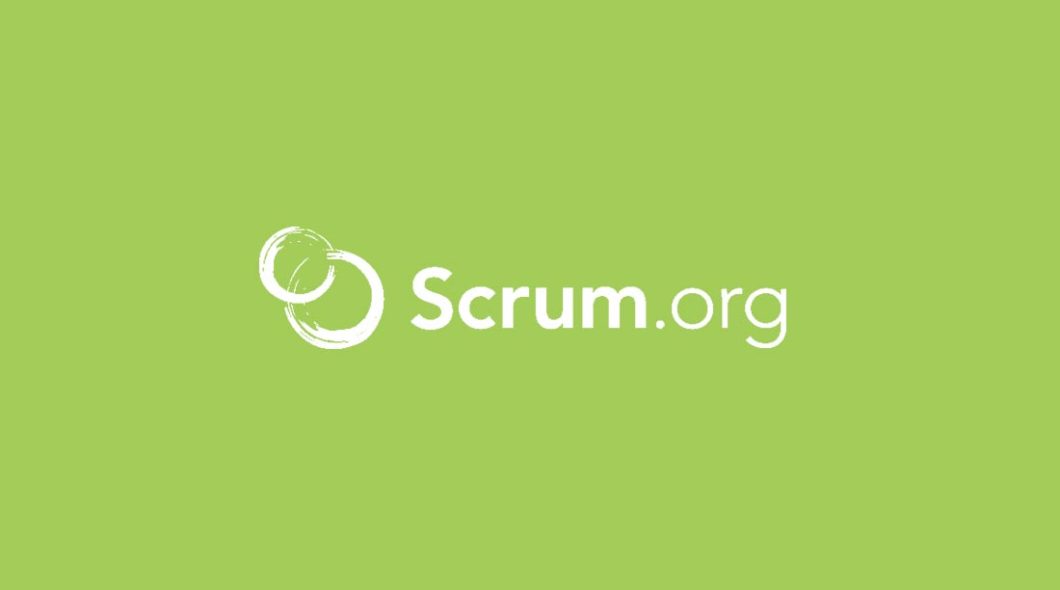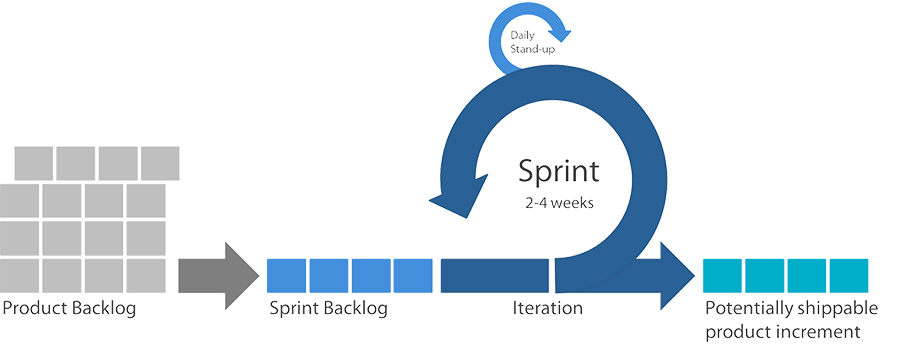Scrum
Scrum is an agile approach that originally came out of the IT industry, but today applies to many other sectors. This method provides a clear process and specific roles that allow organisations to adjust easily to changing customer needs (external or internal) and deliver better quality products.

The Scrum method proposes a model of process control based on empiricism, through continuous adaptation to the actual conditions of the activity and a rapid response to changes. Analysis of the actual conditions of the activity during end-of-sprint retrospectives and the resulting continuous improvement plan are carried out at regular time intervals, giving rise to an incremental development cycle (Sprint).
Scrum is an empirical process based on grass-roots experience. It is founded on three key elements:
- Transparency
Scrum emphasises having a common language between the team and the management. This common language must enable any observer to gain a good understanding of the project rapidly. - Inspection
At regular intervals, Scrum proposes to take stock of the different artefacts produced, in order to detect any undesirable variation. These inspections should not be done too frequently, or by a poorly trained inspector: this would hinder the progress of the project. - Adaptation
If any deviation is noticed during the inspection, the process must be adapted. Scrum envisages events during which this adaptation is possible. These are the sprint planning t meeting, the daily scrum, the sprint review and the sprint retrospective.
Scrum defines three roles:
- The product owner represents customers and users, responsible for maximising the value of the product and of the work of the development team.
- The Scrum Master is responsible for understanding the framework and adhering to it and implementing it. He/she is a “leader at the service of the team”, assisting every role of the scrum team in its activity, and promoting change in role interactions to maximise the value of what the team produces. His/her authority extends to the development process (definition of the duration of the sprints, modalities of holding scrum meetings and their agenda etc.), but not over the other members of the scrum team.
- The development team consists of 3 to 9 members, with responsibility for delivering at each end of iteration a new version of the application enriched with new features while respecting the level of quality that needs to be delivered.
The team has no predefined roles: it is “structured and empowered by the company to organise and manage its own work”.
It is self-organised and chooses the way it does its work without this being imposed by an outside person. It also lacks the concept of an internal hierarchy: all decisions are made together. The objective of this principle of organisation is to increase the team’s work effectiveness.
It is multidisciplinary and includes all the skills needed to realise its project without calling on any services outside it.
The objective of the team is to deliver the product in increments. Thus, at any time, there is a “potentially usable” version of the product available.


